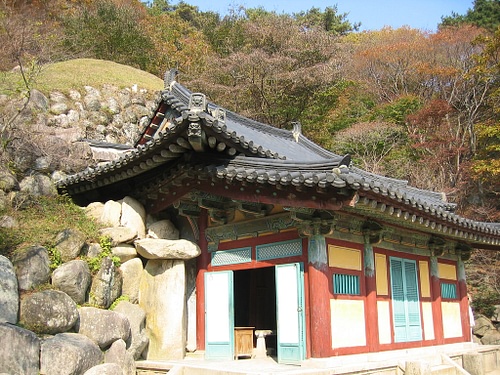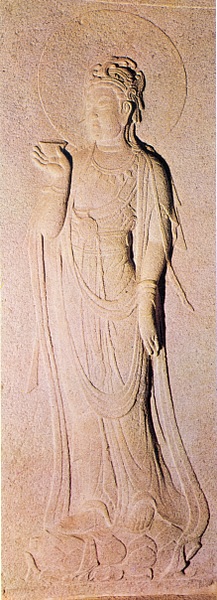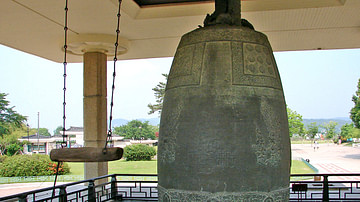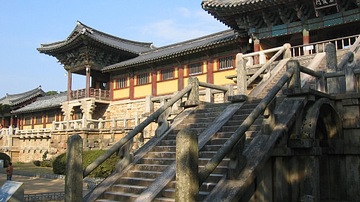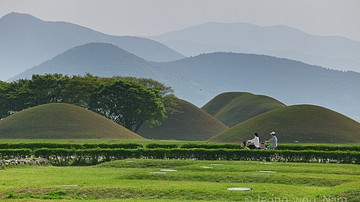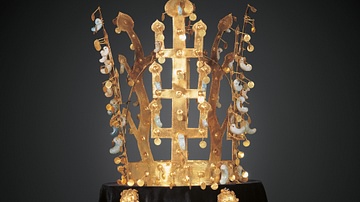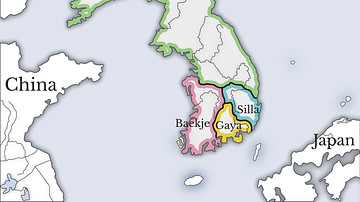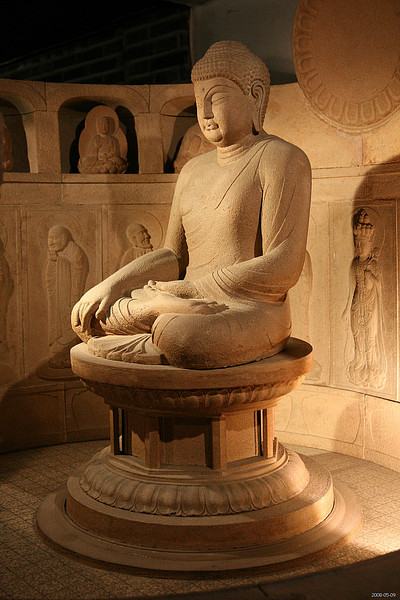
The Seokguram Grotto (Sokkuram) is a Buddhist cave temple constructed during the Unified Silla Period (668-935 CE) of ancient Korea. The 8th-century CE structure, located near the Bulguksa Temple on Mt. Toham at the ancient Silla capital of Geumseong (modern Gyeongju, South Korea), contains a large statue of the Buddha who is seated within a circular chamber beneath a stone hemispherical dome. Widely considered one of the great masterpieces of Buddhist art and architecture it is on the official list of National Treasures of South Korea and classified as a UNESCO World Heritage Site.
Layout & Design
The artificial grotto was constructed between 751 and 774 CE, according to tradition by the chief minister (chungsi) Kim Daeseong (700-774 CE), and is set into the upper south-eastern slopes of the Tohamsan mountain near Gyeongju, the Silla capital. Granite from the mountain was quarried from behind the grotto and cut into large blocks to build the outer walls of the structure which were then covered in earth to create a mound. The design echoes similar cave temples in ancient India (e.g. Ellora and Ajanta) and China (e.g. Yunggang and Longmen). An entrance tunnel opens out into a rectangular antechamber – representing the earth - which then leads to a short vestibule with two octagonal columns. These columns frame the entrance to the large circular inner chamber, which symbolises the sky. The whole structure is reminiscent of mound tombs found throughout ancient Korea, perhaps originating in the Goguryeo kingdom (37 BCE – 668 CE).
Interior Sculpture
The interior walls of the grotto are decorated with a total of 41 figure sculptures, which are regarded as amongst the finest ever produced in Korea. The rectangular chamber has figures carved in relief, each on a two-metre-high rectangular panel – eight are of Parivara figures and two of Vajra-pani. Four relief guardians are set into the walls of the vestibule.
In the circular inner chamber is a white granite statue of the Sakyamuni Buddha which is 3.45 metres high. He sits cross-legged on a large circular pedestal or throne, itself 1.6 metres high, and he faces east, thereby offering protection against invasion across the East Sea, especially from Japanese pirates who were prevalent at the time of construction. Significantly, the rising sun strikes the statue right on the centre of the forehead. The statue was originally painted red, but only faint traces remain. Buddha strikes the dyhana mudra pose with his left hand laid on his left thigh. His right hand is placed on the right knee with fingers extended in the bhumisparsa mudra gesture. He wears a simple robe worn over the left shoulder.
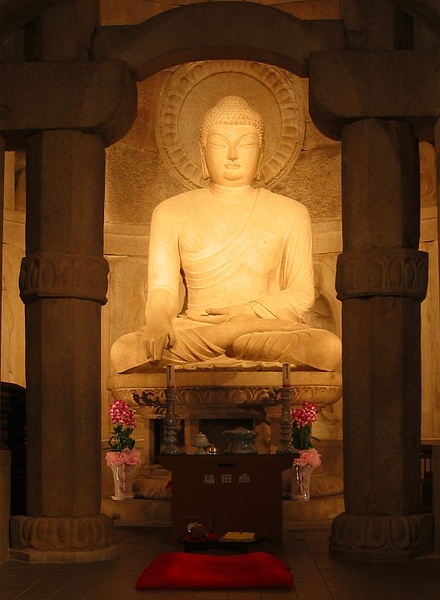
Set behind the Buddha's head (as seen from the entrance) is a lotus-halo. The wall of the inner chamber is again formed by a perfectly symmetrical arrangement of rectangular 1.6 m tall slabs, this time carrying relief figures depicting three bodhisattvas (specifically Manjusri, Samantabhadra, and Ekadasamukha), two devas (Brahma and Sakra-devendra), and ten disciples. Perhaps the most appreciated by art historians is the figure of Avalokitesvara, the eleven-headed bodhisattva associated with mercy. Above these figures are ten niches, originally with a seated bodhisattva in each one but two figures are missing.

Restoration
The Grotto of Seokguram was restored by the Japanese at the beginning of the 20th century CE, and not all scholars agree that the restoration is entirely faithful to the original temple structure. Following the works, the grotto suffered from humidity which was damaging the sculptures. This has now been resolved, but the incident illustrated that the original Silla architects purposely built the grotto over an underground stream so that the lower temperature of the flooring brought humidity down from the ceiling, thus better preserving the artworks within. Scholars also suggest that ten recesses built into the dome had holes which allowed ventilation, which further helped humid air escape from the chamber.
The grotto was further repaired in the latter part of the 20th century CE, and although still possible to visit inside, the inner chamber is protected by a glass partition. Seokguram features at position no. 24 on the official state list of National Treasures of Korea. As the art historian Jane Portal summarises, "the cave temple at Sokkuram is as technically perfect and elegant as it is possible to be" (21).
This content was made possible with generous support from the British Korean Society.
